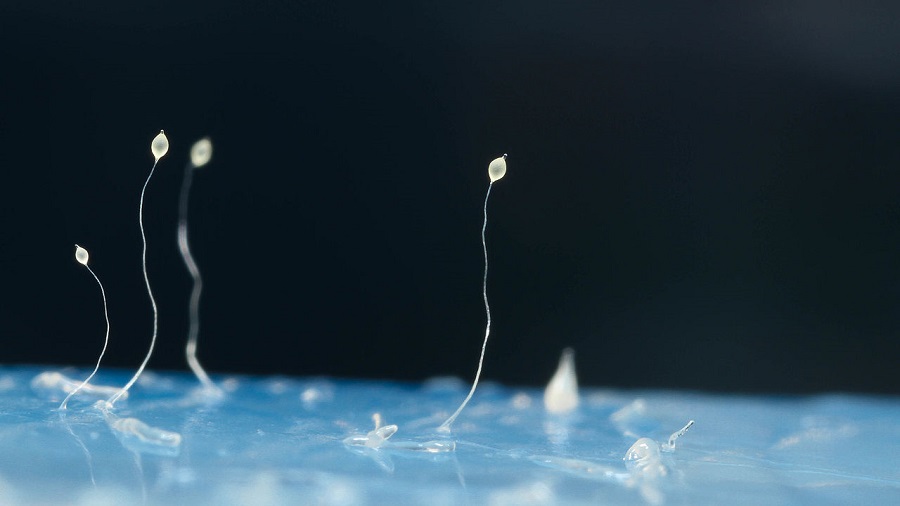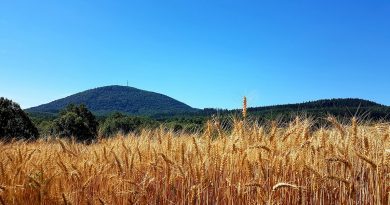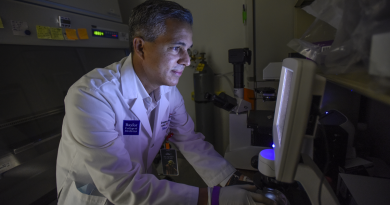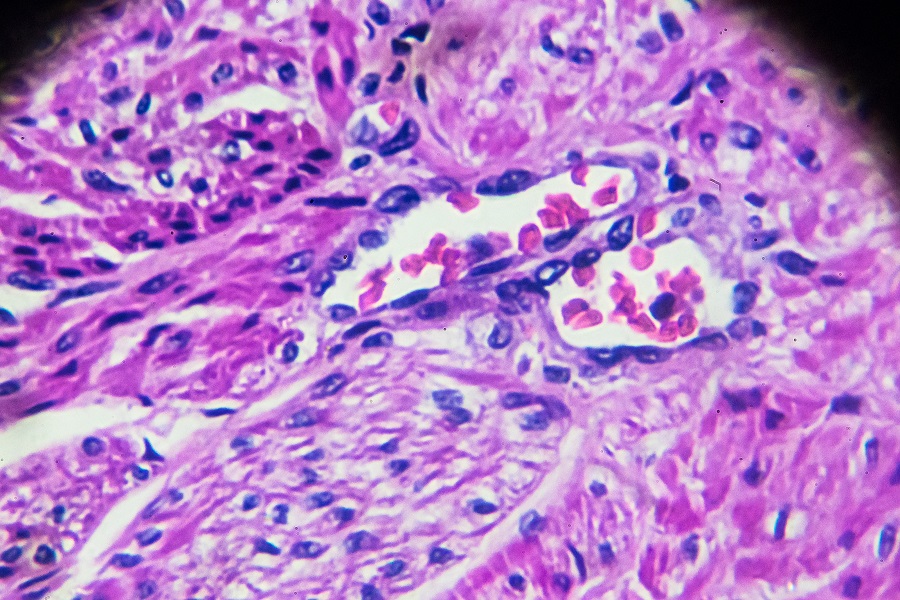The social amoeba’s surviving balancing act
Single-celled bodies of the social amoeba Dictyostelium discoideum live in the soil voraciously feeding on bacteria. As this food source dwindles, the amoebas get stressed and respond by getting together, forming first a slug and then a fruiting body consisting of a ball of spores balanced atop a dead stalk.
It’s been known for a number of years that the multicellular slug and the fruiting body stages of some, but not all, social amoeba carry bacteria. Extensive research also has revealed that amoeba can use these bacteria as a source of food and as defense against other organisms. Some bacteria produce antimicrobial molecules that the social amoeba can use as chemical weapons against other organisms.

In 2016, Dr. Adam Kuspa, professor of biochemistry and molecular biology at Baylor College of Medicine, and his colleagues discovered another intriguing feature of the slug stage of the amoeba.

“Bacteria that seek to attack the multicellular slug stage of the social amoeba face an effective defensive mechanism. Amoebas cast traps made of DNA nets studded with antimicrobial granules. The bacteria stick to and die on the nets. This defensive strategy is similar to that seen in mammalian immune cells called neutrophils that also capture and destroy bacteria,” said Kuspa, who also holds the Salih J. Wakil, Ph.D. Endowed Chair in the Verna and Marrs McLean Department of Biochemistry and Molecular Biology.
This finding intrigued the Baylor researchers. How do some amoebas manage to maintain their own microbiome and, at the same time, keep an innate defense mechanism that should kill the bacteria? What prevents the amoeba from killing all the bacteria?
Lectins are key
The researchers knew that amoebas secrete molecules that can kill bacteria outside the cell. To study the proteins amoebas release, Kuspa and his colleagues took from their laboratory strains of amoeba without a microbiome – the ‘non-carrier’ strains – and wild strains carrying a microbiome – the ‘carrier’ strains – and separately cultured them with bacteria. Then, they collected the culture medium, the liquid the cells had grown in, and analyzed the proteins the cells had left behind.
When Christopher Dinh, laboratory director who directed the project, did this experiment he found a major difference between the pattern of proteins released by carrier and non-carrier strains. The most striking difference was in two proteins in particular, called discoidins, which were produced about 100 times more by the carrier strains.
“Discoidins are a type of lectin, which is a very well-known group of proteins that bind sugars, such as those on the surface of bacteria,” Kuspa said.
Amoebas that produce discoidins have a microbiome, whereas those that do not produce discoidins don’t have a microbiome. Coating bacteria with discoidins in the lab also protects the bacteria from being killed by amoebas.
“We also found that other lectins from plants like soy, for instance, can protect bacteria from being killed by amoebas and mediate the establishment of a microbiome,” Kuspa said. “Furthermore, lectins seem to act not only as a ‘Kevlar vest’ for bacteria, but also as a mediator of a phenomenon akin to symbiosis – a relationship between two or more organisms that live closely together. Lectin-coated bacteria inside the amoeba remain alive longer than bacteria without coating, and can transfer genetic material to the amoeba.”
Taking all their results together, the researchers propose that their findings point at a new, independent way that amoebas handle bacteria that is fundamentally different from the well-known pathway of ingesting bacteria and then digesting them in the phagolysosome.
“We show that discoidin alters the handling of bacteria by amoeba so that live bacteria persist inside the amoeba, a phenomenon that we have called lectin-induced modified bacterial internalization, or LIMBI,” Kuspa said. “Through LIMBI, bacteria have an opportunity to transfer genetic material to the amoeba in cell cultures in the lab.”
Furthermore, lectins also can protect bacteria from being killed by mammalian cells in tissue culture in the laboratory.
“Our plan is to continue these experiments in mice to see if lectins also can alter the microbiome in living animals,” Kuspa said. “Studies have shown that lectins tag bacteria for destruction but this is the first paper that shows the opposite.”
Find all the details of this study in the journal Science.
Other contributors to this work include Timothy Farinholt, Shigenori Hirose and Olga Zhuchenko, all from Baylor College of Medicine.
Financial support was provided by a Dictyostelium Functional Genomics Program Project Grant from the National Institutes of Health (PO1 HD39691).



